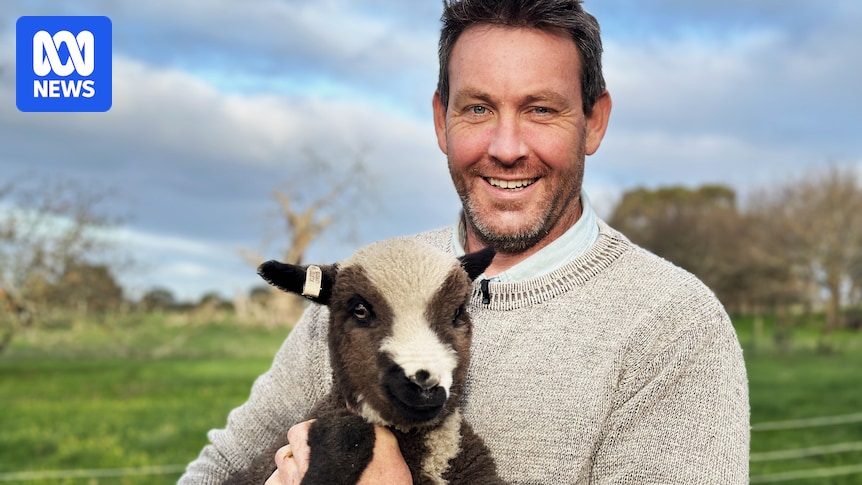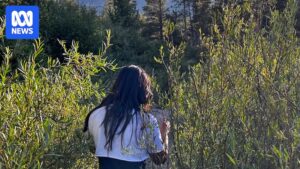
In 1971, Wendy Dennis experienced a moment of inspiration while taking a shower. “I thought, ‘Why don’t I breed coloured sheep?’ Because it’s already got a colour, you don’t have to dye it, no chemicals. Breed them,” she recalled. At the time, Wendy was newly married to a farmer in south-west Victoria, and the global resurgence in home crafts such as spinning and knitting natural fibres was just beginning.
Traditionally, sheep with non-white wool were often destined for the dinner table. However, Wendy had a different vision. “So I rescued a few coloured sheep out of the ‘killer’ paddock, [where they were] ready for Sunday lunch,” Wendy, now 83, recounted. Her husband, Dave Dennis, remembers her determination. “People are starting to spin coloured wool,” Wendy told him. “‘I’m going to have those killers. You can’t kill them,'” Dave recalled her saying. Thus, a unique flock was born, where the recessive dark wool gene replaced the dominant white wool one.
The Birth of a Unique Flock
The Dennis family’s Polwarth flock transformed into coloured wool sheep in the 1970s. “There are so many different colours. There are all the blacks and greys then there’s the browns and fawns,” Wendy explained. The wool from these sheep has been highly sought after by craft enthusiasts around the world, thanks to its unique qualities.
The Polwarth breed, traced back to 1880, was the brainchild of Wendy’s ancestor, Richard Dennis. “Australia’s first breed of sheep, and it all started with the Dennises in 1880,” Wendy said. Richard Dennis developed the breed by crossing merino sheep with Lincolns to combat fleece rot caused by the cold, damp climate.
“So it’s three-quarter merino, one quarter Lincoln, bred to a fixed type called a Polwarth, originally [named] a Dennis Comeback, later called a Polwarth,” Wendy added.
Polwarths: A Global Phenomenon
The Polwarth’s long, greasy wool, inherited from the Lincoln, enabled it to thrive in wetter, colder climates. By the early 1900s, the breed was spreading rapidly throughout southern Australia and being exported to high rainfall countries, including South America and the Falkland Islands.
Polwarths reached their peak in Australia in the 1960s, with about 8 million sheep, accounting for more than half the sheep population in Tasmania. However, at recent events like the Australian Sheep and Wool Show in Bendigo, the number of entries has dwindled. “It’s a bit tough for a lot of people to get here and the costs are getting dearer and nothing is getting easier,” said Tasmanian producer Wayne Walker, who shipped his prized Polwarths across Bass Strait to win major prizes.
The Future of Polwarth Wool
Despite a decline in numbers due to advances in the merino breed, breeders like Greg Potter and his daughter Samantha see a bright future for Polwarth wool. “People love the single source Polwarth,” Samantha said. Greg added, “Being a longer, straighter, more aligned fibre makes the wool easier to peel out and spin.”
Their wool is sold directly to the wool craft market, including to the Dennis family, and is processed and spun locally into yarn. Isabel Renters, who operates a carding and spinning mill near Ballarat with her husband Nick, notes the growing demand for natural, sustainable fibre products. “All looking for natural products where they know it’s sustainable, it’s ethical, traceable,” Isabel said. “It’s a huge international market now, a big trend now certainly getting away from synthetics.”
“It’s just a dream come true because it’s got a good crimp, which makes it a little more elastic and it’s got a demi-lustre from the Lincoln which makes it shine a tiny bit and it’s so soft from the merinos,” Wendy Dennis said.
Tom Dennis, the fifth generation of his family to grow Polwarths, is setting up a mini museum on the property to better tell the Polwarth story. “We need to make sure we’ve got woollen yarn in front of people that appreciate Australian-grown, Australian-processed, good ethical standards,” Tom said. “And those sorts of values that people want to buy into when they’re purchasing yarn.”







